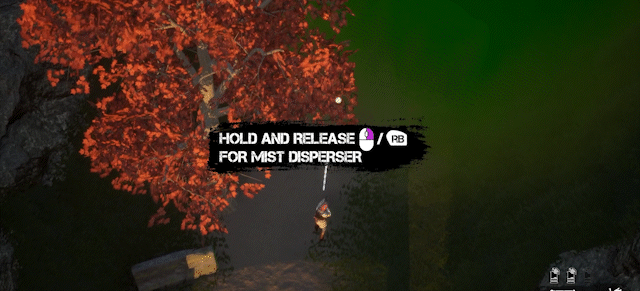
THE FLAREWATCHER
CONTRIBUTIONS

Level Design
Level Design
Responsible for creating all of the level design in the game. I worked on the layout, blockouts to the last stages of implementing 3D assets.
DESIGN PILLARS

Arsenal
Empowered players through a vast arsenal of weapons.
Arsenal
Narrative
Narrative
Collaborated with the narrative team to write the story of the game.
Cover-to-cover
The apartment complex hosts paranormal activity, requiring players to utilize camera equipment to detect and eliminate ghosts.
Cover-to-cover



Level Art
Level Art
Collaborated & communicated the art direction with the team. I was responsible for set dressing and packaging the levels.

Dodging
Dodging
Caution is essential for survival—investigate before acting, and use running, sneaking, and strategic movement to stay alive.
THE GAME
The Flarewatcher is a narrative driven single player experience set in a post apocalyptic world. In this fast-paced top down shooter the player needs to move from cover to cover to survive in hostile territory where enemies are gunning for you. With the help of a rich arsenal and dodging, the player needs to traverse the environment to send out a distress flare to a nearby settlement for reinforcements.
LEVEL DESIGN
The main goal of the level design was to create an exciting linear experience to push the narrative forward and make the player progression clear.
One of the most important parts of the linear design was to develop with variation strongly in mind to make the player feel the progression by moving into new territory and collecting new weapons
Research
The first impression relies heavily on the composition of the first frame of the level to introduce the vastness and emptiness of the apartment complex. The design choice of emphasising vastness was used to communicate the feeling of isolation and add to the mystery of the game.
I designed this level with verticality in mind to encourage players to explore on their own intuition. It also helps reinforce the feeling of isolation—being surrounded by vast space, but without the comfort of any social interaction.
With exploration in mind as one of the core pillars of the game, I gave the players the freedom to pick their own path and discover things at their own pace and discover the clues dynamically.

Isometric perspective
Tackling the isometric perspective was both challenging and rewarding. I worked to shape levels that felt fast and fluid, while also ensuring replayability. A big part of the process was balancing environments so players could experiment with different weapons and approaches.
For the player to re-evaluate the selected approach was depending on the ammo found by the player. By having scarcity of ammo and the possibility of three different weapons, the player would need to change the approach and strategize according to resources found.
In this game design approach the levels needed to be designed in a way that supports the linear experience and at the same time supporting the three different approaches in enemy encounters. The main focus became making the levels traversable in multiple ways without verticality and designing the levels for the gameplay with different level progressions in mind.

Mid-range (assault rifle)

Close range (shotgun)
One of the most important parts of designing the level was to keep in mind how 3C worked in the game. As we had fixed camera switches, the pacing of the level had to be carefully planned to not cause dizziness for the player. The level was therefore designed in boxes with a set number of minutes of gameplay for each box.
In the sketch (section 1/3 of the level) to the right, the boxes represent gameplay minutes and the pacing of the level. Where the camera will turn and how many minutes of gameplay each box contain.
By dividing the level into boxes I got an understanding of how much gameplay to implement in each section, and how far the player would traverse in each box.

Isometric perspective
During development we had extensive playtesting ongoing throughout the process. By having the playtests we gained feedback for improvements that could be made. This helped me in the process of iterating on the levels and solving defects and issues, making the level more fun to play.
One of the biggest concerns in the alpha and beta stages of the game was the tutorial section being too short. The playtesters didn’t have time to learn the mechanics of the game before jumping into it. By re-doing the tutorial level according to feedback the tutorial was better received and the game loop could better be understood and made the game more enjoyable.


Tutorial section in the beta level
Extended tutorial section


Gameplay of extended tutorial section
LEVEL ART
I was responsible for the art direction and communicating with the art team and once the vision was established, the process for the art team of creating the art assets became streamlined and it was easy to keep coherency.
Modular 3D assets were created for more easily placing art assets in the level. Every week a new set of assets were done and imported and I could implement the assets and keep adding variation.
By correctly scaling the levels and placeholder assets by day one in the blockouts, the placement and implementation of the art became a fast-paced workflow.
The transition from blockout to complete levels was done within days through switching out the placeholder assets with finished, polished assets.
It was an enriching experience to be responsible for the art placement and direction, as I got to bring life to the level design I created.


GALLERY







